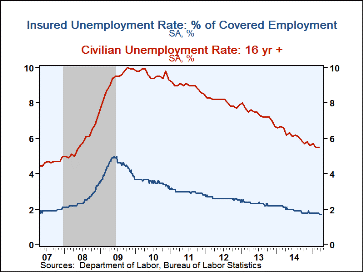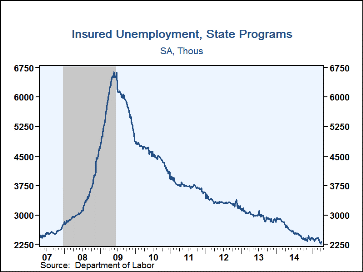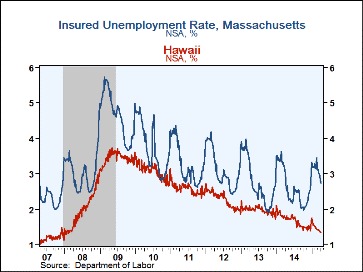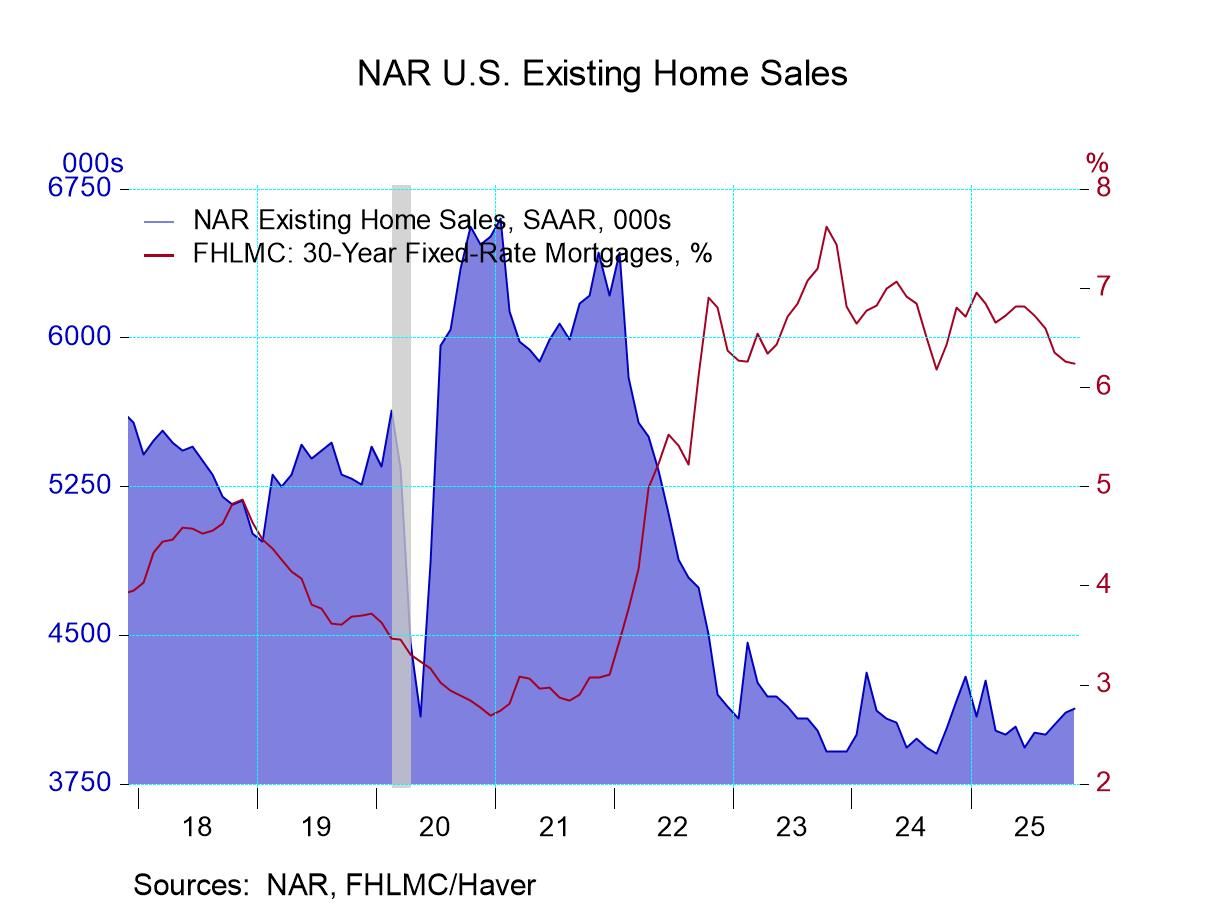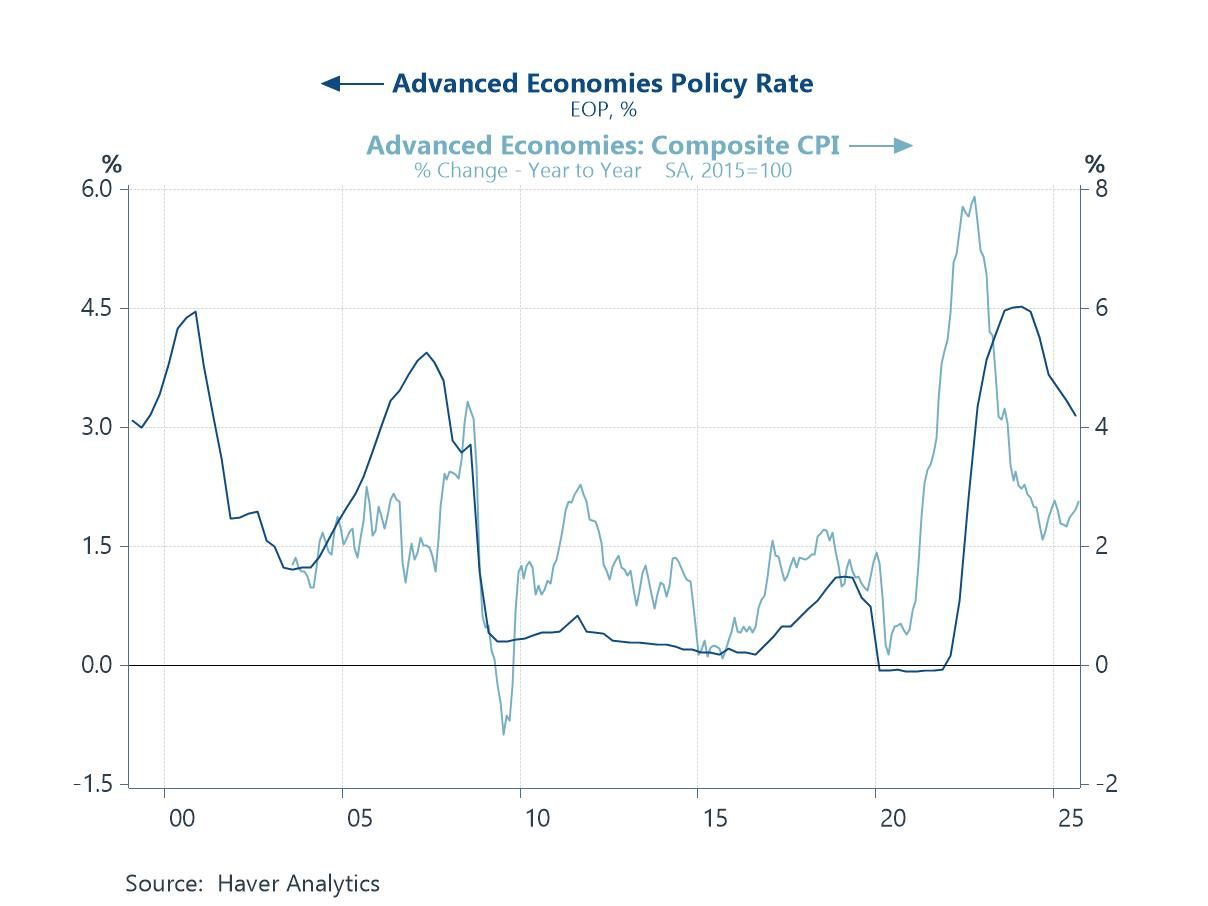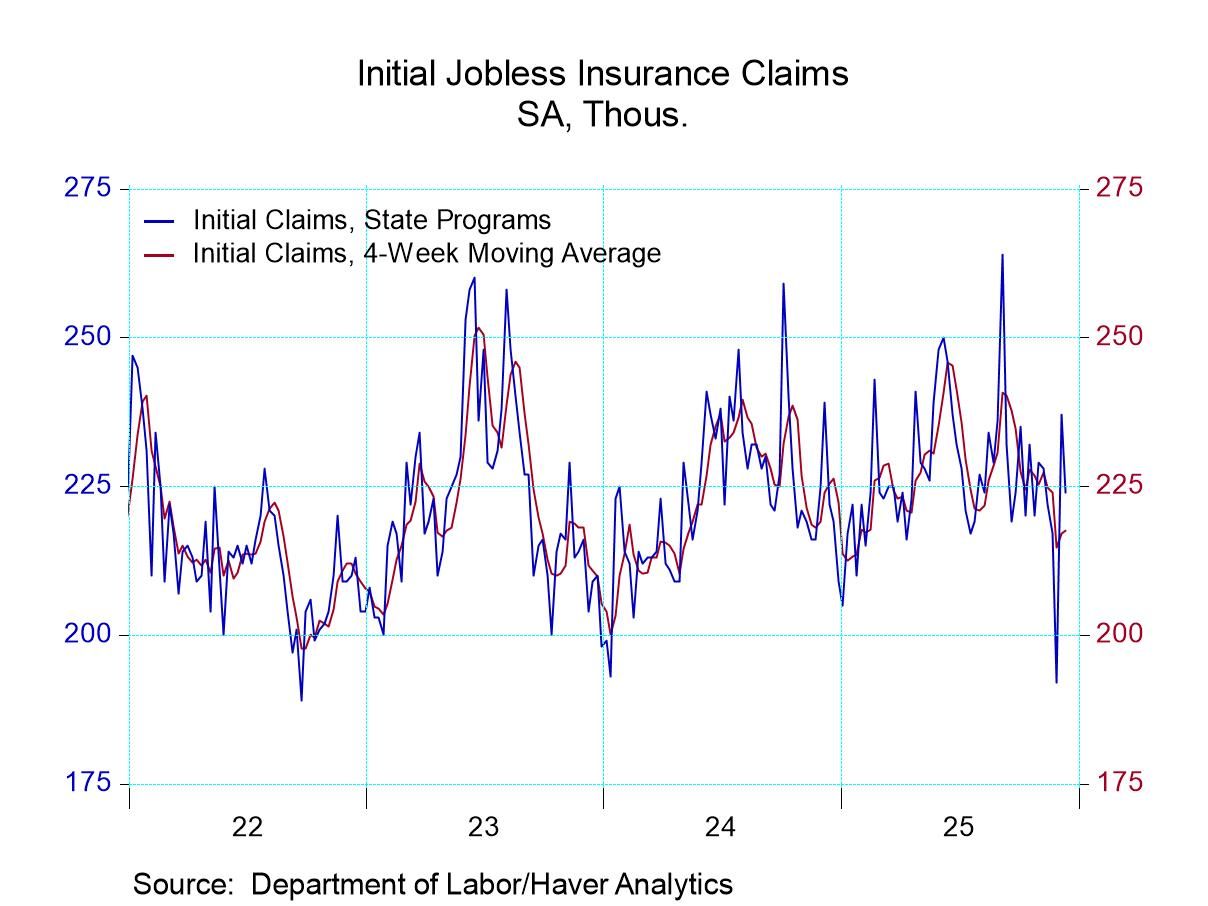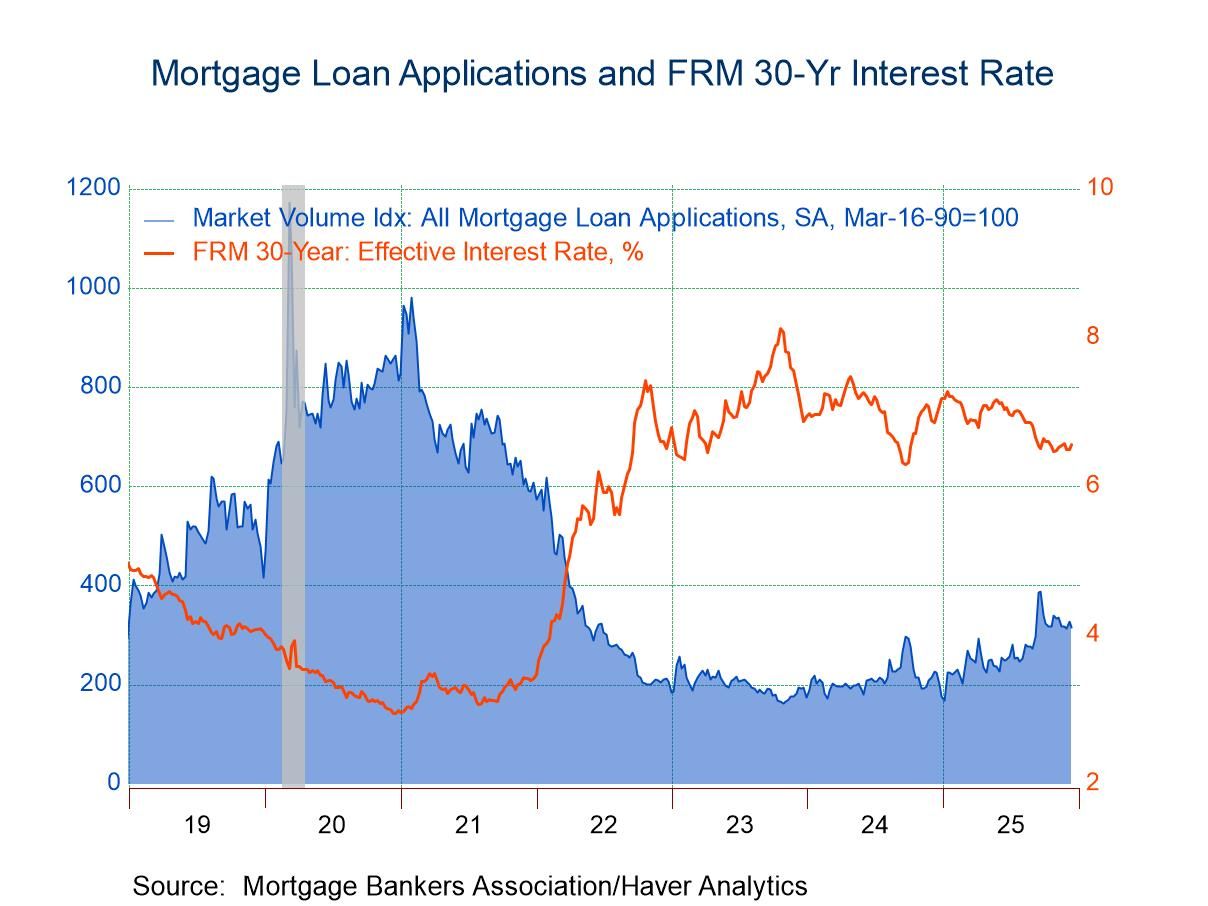 Global| Apr 23 2015
Global| Apr 23 2015U.S. Initial Unemployment Insurance Claims Suggest Limited Layoffs
by:Tom Moeller
|in:Economy in Brief
Summary
The job market remains on a firm footing as evidenced by initial claims for unemployment insurance. Except for a brief period this winter, they have been hovering below 300,000 since August. Initial claims in the week ended April 18 [...]
The job market remains on a firm footing as evidenced by initial claims for unemployment insurance. Except for a brief period this winter, they have been hovering below 300,000 since August. Initial claims in the week ended April 18 nudged up to 295,000 (-10.6% y/y) from an unrevised 294,000 in the prior week. The four-week moving average of claims rose to 284,500, but remained near the lowest level since June 2000. The Action Economics Forecast Survey expected 289,000 claims in the latest week.
The latest initial claims figure covers the survey week for April nonfarm payrolls and compared to 293,000 during the March period. During the last ten years, there has been a 76% correlation between the level of initial claims and the m/m change in nonfarm payrolls.
The insured rate of unemployment held at 1.7% in the week ended April 11, its lowest level since November 2000.
Continuing claims for unemployment insurance rose to 2.325 million (-13.6% y/y) in the latest week. The four-week moving average fell to 2.309 million, the lowest level since December 2000.
By state, in the week ended April 4 the insured rate of unemployment continued to vary greatly with South Dakota (0.56%), South Carolina (0.86%), Tennessee (0.96%), New Hampshire (1.12%), Alabama (1.24%) and Hawaii (1.34%) at the low end of the range. At the high end were New York (2.27%), Nevada (2.33%), California (2.48%), Pennsylvania (2.63%), Rhode Island (2.72%) and Massachusetts (2.75%). These data are not seasonally adjusted.
Data on weekly unemployment insurance are contained in Haver's WEEKLY database and they are summarized monthly in USECON. Data for individual states are in REGIONW. The expectations figure is from the Action Economics survey, carried in the AS1REPNA database.
Did Massachusetts Health-Care Reform Affect Prices? from the Federal Reserve Bank of San Francisco can be found here.
| Unemployment Insurance (000s) | 04/18/15 | 04/11/15 | 04/04/15 | Y/Y % | 2014 | 2013 | 2012 |
|---|---|---|---|---|---|---|---|
| Initial Claims | 295 | 294 | 282 | -10.6 | 309 | 343 | 374 |
| Continuing Clai0ms | -- | 2,325 | 2,275 | -13.6 | 2,599 | 2,978 | 3,319 |
| Insured Unemployment Rate (%) | -- | 1.7 | 1.7 | 2.1 (04/14) |
2.0 | 2.3 | 2.6 |
Tom Moeller
AuthorMore in Author Profile »Prior to joining Haver Analytics in 2000, Mr. Moeller worked as the Economist at Chancellor Capital Management from 1985 to 1999. There, he developed comprehensive economic forecasts and interpreted economic data for equity and fixed income portfolio managers. Also at Chancellor, Mr. Moeller worked as an equity analyst and was responsible for researching and rating companies in the economically sensitive automobile and housing industries for investment in Chancellor’s equity portfolio. Prior to joining Chancellor, Mr. Moeller was an Economist at Citibank from 1979 to 1984. He also analyzed pricing behavior in the metals industry for the Council on Wage and Price Stability in Washington, D.C. In 1999, Mr. Moeller received the award for most accurate forecast from the Forecasters' Club of New York. From 1990 to 1992 he was President of the New York Association for Business Economists. Mr. Moeller earned an M.B.A. in Finance from Fordham University, where he graduated in 1987. He holds a Bachelor of Arts in Economics from George Washington University.



